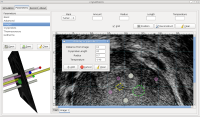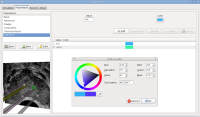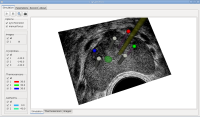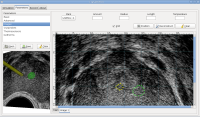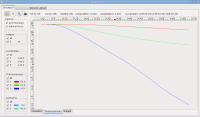CryoVision
Cryosurgical treatment starts with inserting several cold-releasing needles into the affected organ, whereby the tumor cells are exposed to low temperatures. Once the tumor cells reach the critical temperature of about -40°C, they get destroyed.
The critical temperature is usually reached within minutes. Since further freezing may result in serious damage to the healthy tissue, it is a matter of crucial importance that the exact moment when the critical temperature is achieved be immediately recognized. Unfortunately, none of the known methods of direct observation (such as ultrasound images) provide enough information in order to conduct the cryosurgical treatment with sufficient precision.
We suggest that it is possible to use high-performance computing to predict the development of cryosurgical treatment with high precision. Our software simulates the freezing process and presents it to the surgeon in a realistic three-dimensional graphical format.
Preliminary tests have shown that our software achieves the high precision necessary to guide the cryosurgical treatment. The software's generic design allows easy customization for cryosurgical treatment of prostate, breast, kidney, liver or any other cancer that can be treated with this method.
It is our hope that our method will enable a more precise tumor removal and reduce post-operational complications (such as impotence after the treatment of prostate cancer, which occurs in nearly 90% of the cases).

